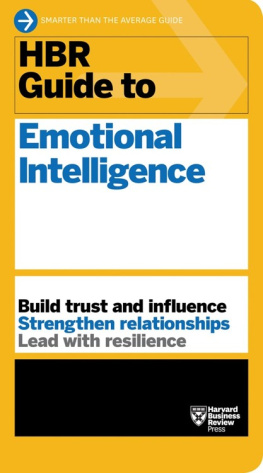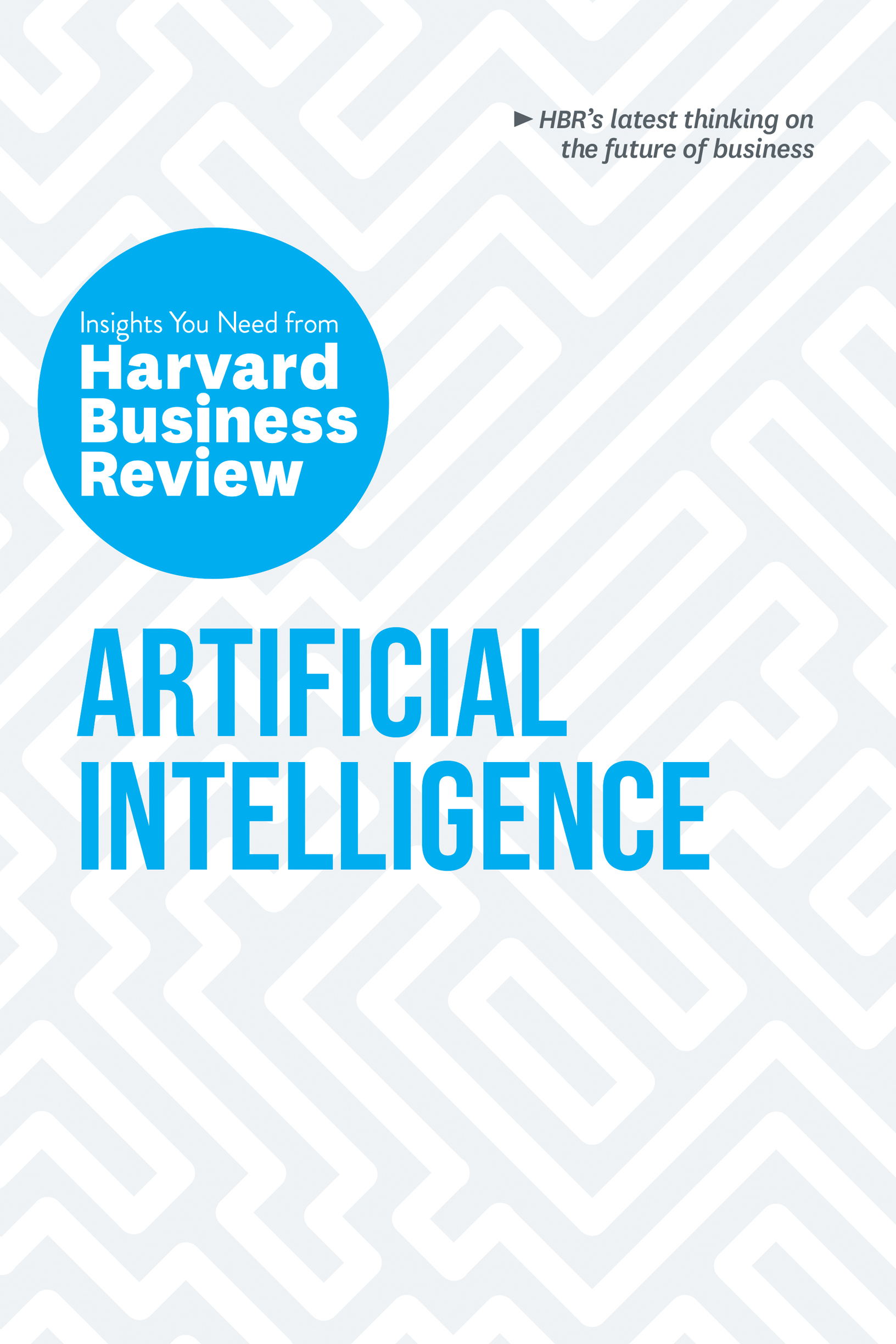HBR Press Quantity Sales Discounts
Harvard Business Review Press titles are available at significant quantity discounts when purchased in bulk for client gifts, sales promotions, and premiums. Special editions, including books with corporate logos, customized covers, and letters from the company or CEO printed in the front matter, as well as excerpts of existing books, can also be created in large quantities for special needs.
For details and discount information for both print and
ebook formats, contact ,
tel. 800-988-0886, or www.hbr.org/bulksales.
Copyright 2019 Harvard Business School Publishing Corporation
All rights reserved
No part of this publication may be reproduced, stored in or introduced into a retrieval system, or transmitted, in any form, or by any means (electronic, mechanical, photocopying, recording, or otherwise), without the prior permission of the publisher. Requests for permission should be directed to , or mailed to Permissions, Harvard Business School Publishing, 60 Harvard Way, Boston, Massachusetts 02163.
The web addresses referenced in this book were live and correct at the time of the books publication but may be subject to change.
Library of Congress Cataloging-in-Publication Data
Title: Artificial intelligence : the insights you need from Harvard Business Review.
Other titles: Artificial intelligence (Harvard Business Review Press) | Insights you need from Harvard Business Review.
Description: Boston, Massachusetts : Harvard Business Review Press, [2019] | Series: The insights you need from Harvard Business Review
Identifiers: LCCN 2019011886 | ISBN 9781633697898 (pbk.)
Subjects: LCSH: Artificial intelligence. | Artificial intelligenceIndustrial applications. | Technological innovationsEconomic aspects.
Classification: LCC Q335 .A778 2019 | DDC 658/.0563dc23
LC record available at https://lccn.loc.gov/2019011886
ISBN: 978-1-63369-789-8
eISBN: 978-1-63369-790-4
Contents
- Its still early, but the revolution is coming.
- by Thomas H. Davenport
- What it canand cannotdo for your organization.
- by Erik Brynjolfsson and Andrew McAfee
- At the social network behemoth, machine learning has become a platform for the platform.
- An interview with Joaquin Candela by Scott Berinato
- The fast follower strategy wont work.
- by Vikram Mahidhar and Thomas H. Davenport
- How does it work, what is it good at, and what should it never do?
- by Emma Martinho-Truswell
- The problem with data is the new oil.
- by Ajay Agrawal, Joshua Gans, and Avi Goldfarb
- Pick a quick win to build internal support.
- by Andrew Ng
- You need to have a plan.
- by Roman V. Yampolskiy
- In some versions, society will fundamentally change.
- by Mark Knickrehm
- Humans and machines can enhance each others strengths.
- by H. James Wilson and Paul Daugherty
- As we spend more time with our devices, we emit more data to be analyzed.
- by Sophie Kleber
- E-commerce could move from shopping-then-shipping to shipping-then-shopping.
- by Ajay Agrawal, Joshua Gans, and Avi Goldfarb
- We need computers with some common sense.
- by H. James Wilson, Paul Daugherty, and Chase Davenport
Introduction
THE STATE OF AI IN BUSINESS
by Thomas H. Davenport
The most important general-purpose technology of our era is artificial intelligence. So Eric Brynjolfsson and Andrew McAfee describe AI in the first article of this book. But even as the significance of AI becomes irrefutable, it remains misunderstood. Executives view AI as a key disruptive technology, employees fear it as a job destroyer, consultants pitch it as a cure-all, and the media hype and deride it endlessly.
This book will help you tune out all this noise and understand AIs implications for you and your business. No matter your industry, level, or the size of your company, this collection of some of HBRs best recent articles on AI will show you where the technology is going.
Lets start with an overview of the state of AI in business today and its near-term implications.
AI is undoubtedly booming in businessat least in certain segments of it. In my work, Ive helped design and analyze surveys suggesting that 25% to 30% of large U.S. companies are pursuing AI, many quite aggressively. Some have hundreds or even thousands of projects underway. The firms using AI most aggressively are large businesses with the most dataonline platforms, financial services, telecommunications, and retail. Small- to medium-sized enterprises, business-to-business firms, and those in basic manufacturing industries are less likely to use AI. They typically lack not only the data to succeed with AI, but the expertise and awareness to pursue it effectively. Firms outside the United States are also pursuing AI at a slower pace, although there are aggressive adopters in China, the U.K., Canada, and Singapore.
A variety of different AI technologies are in use. You need to be aware of which ones do what. As Emma Martinho-Truswell explains in her article, machine learning is perhaps the most important component of AI, but it has multiple variationsordinary statistical machine learning, neural networks, deep learning neural networks, and so on. Versions of AI also use semantic approaches to understanding language and logic-based rule engines for making simple decisions. Each technology performs a particular set of tasks; deep learning, for example, excels at recognizing images and speech.
AI is being applied for various business purposes. The most common uses enable us to make better decisions, improve operational processes, and enhance products and services. The first two are an extension of business analytics and typically employ machine learning; product-oriented objectives are common in high-tech firms, automobiles, and advanced manufacturing.
Many large companies are creating infrastructures and processes to manage AI. More than a third of large U.S. firms report in multiple surveys that they have a strategy in place for AI, have created a center of excellence to facilitate its use, and have identified its champions in the management team. As Vikram Mahidhar and I suggest in our article, late adopters may have difficulty catching up.











